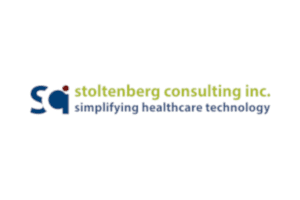As we kick off 2024, we wanted to start the new year with a series of 2024 Health IT predictions. We asked the Healthcare IT Today community to submit their predictions and we received a wide ranging set of responses that we grouped into a number of themes. In fact, we got so many that we had to narrow them down to just the best and most interesting. Check out our community’s predictions below and be sure to add your own thoughts and/or places you disagree with these predictions in the comments and on social media.
All of this year’s 2024 health IT predictions (updated as they’re shared):
- John and Colin’s 2024 Healthcare IT Predictions
- Health Equity Predictions
- Healthcare Cybersecurity Predictions
- Telehealth and VR Predictions
- Value Based Care Predictions
- Pharma IT and AI Predictions
- Healthcare Interoperability, Data, and Cloud Predictions
- Healthcare Workforce Predictions
- Healthcare Generative AI and Data Predictions
- Healthcare AI Regulations and Ethics Predictions
- Cautionary Views of AI
- Patient Preditions
- Uses of AI in Healthcare Predictions
- General Health IT Predictions
- Health IT Predictions (on video)
- Healthcare AI Predictions
And now, check out our community’s Patient predictions.
Florian Otto, CEO and Co-founder at Cedar
Healthcare Affordability: Healthcare affordability will always be a problem, and it remains to be seen if 2024 will be better or worse than 2023. In any case, health systems will need to work to improve access to care – and can do so by offering integrated, personalized options. We recently surveyed 1,200 healthcare consumers and found that 71% would be more likely to apply for financial assistance if provided with clear, accessible options. Yet, 55% require help navigating the process of applying. Integrating health benefit accounts, payment plans and even Medicaid enrollment will help meet patients where they are on their financial journey.
Patient Loyalty: We recently surveyed 1,200 healthcare consumers and found that the billing experience is a key driver of patient loyalty. 38% told us that they’ve switched providers due to a negative billing experience. For health systems, not only does this mean that they are at risk of losing nearly 40% of their patients, but there is also the opportunity to gain patients from their competitors.
As we head into 2024, I believe there are three key financial experience factors that will influence patient loyalty
- The availability of payment plans
- Integrated options to help patients pay for their bills, such as health benefit accounts or charity care
- Convenient digital experiences, such as online chat
Kem Graham, Vice President of Sales at CliniComp
In an ever increasingly impersonalized world, and yet an environment ever increasingly reliant on technology, patients will be drawn to healthcare entities which provide an individualized and patient centered experience through their technology partners. Hospital leaders will invest in innovative, scalable and affordable options which provide a broad range of real-time data sources in one vertical view to their clinicians, allowing for more relevant and meaningful patient interaction.
Gary Davis, National Practice Leader at Noyo
Insurance benefits for healthcare, dental and vision are vital in our daily lives and help us all maintain health and wellness. We predict that ‘modern, frictionless’ benefits will take hold in 2024. That means insurance coverage that is easy to understand and use and tailored to match individuals’ needs. Better understanding our insurance plan details leads to using these coverage benefits to their fullest. The fact is, people are often confused by their insurance coverage and that confusion results in a reactive approach to healthcare where people tend to wait until a healthcare crisis hits, often requiring more costly care.
People proactively using their healthcare coverage can have a big impact on individual and population health, as well as help reduce healthcare costs. Modern frictionless benefits can pave the way, enabled by payers embracing API tech that can deliver accurate, sync’d, real-time benefits data that is foundational to driving innovation and this new future ahead.
Gary Hamilton, CEO at InteliChart
The surge in healthcare consumerism is empowering patients to choose how and from whom they receive care, prompting healthcare leaders to adapt to patient preferences for retention and acquiring new patients. Stakeholders, including physicians, health systems, and EHR providers, are implementing strategies to transition from a historically physician-centric healthcare system to one centered around the patient. There are many drivers converging in healthcare that underscore the critical role patient engagement plays in determining providers’ long-term success. And as we move into 2024, understanding how to leverage technology will be critical in helping providers transform the patient experience and empower patients to take an active role in their care.
Christian Hardahl, Global Health Care Solutions Manager at SAS
Patients push to own their health data.
Patients will increasingly demand to own their health and social data and only make it available to the resources they choose. As such, patients will have more autonomy in choosing their specific care teams and seeking out multiple care experts to identify the best treatment paths. At the same time, patients will expect increased security and handling of the personal data they share, and the personal data that health care and pharmaceutical organizations access.
Ellen Rudolph, Co-Founder & CEO at WellTheory
TikTok will become the next WebMD: For better or worse, 1 in 5 Americans (particularly Gen Z) are now turning to TikTok before doctors for health advice. Modern medicine has egregiously failed autoimmune patients – while they wait for a diagnosis, almost half of them are told their symptoms are all in their head – so it’s no surprise that autoimmune disease has 1.7B video views on TikTok.
Gen Z and millennials are less likely to accept the outdated status quo: they’re more open to exploring non-traditional routes to health and wellness and are less likely to have a PCP than past generations. Raised on social media, smartphones and on-demand apps, younger generations are also demanding a different, better, and more consumer-first experience: they believe that engaging in healthcare should be as easy and seamless as any other consumer decision – whether that’s buying a t-shirt or picking a provider to work with.
Health coaches will become the most important lever in reversing the chronic disease epidemic: In the US, not only do we have a physician shortage, but they’re also costly and often don’t have the time nor training when it comes to nutrition and behavior change. Our healthcare system is breaking under the weight of the physician-centric model. The truth is that healing doesn’t happen in a doctor’s office: 80% of our health boils down to the choices that we make on a day-to-day basis, not once a year during our annual 15-minute check-up. That’s where the power of the health coach lies – they operate as behavior change “experts” and help patients tap into and uncover their intrinsic motivations and desire to make change and support in that process. Their role is to motivate you, help you set goals, and serve as an accountability partner along your health journey.
Chris Blackley, CEO at Prescryptive Health
The era of healthcare consumerism has (finally) arrived.
Patients are demanding information and access, and healthcare participants must deliver it. Prescriptions are the actionable place to start. For too long, patients have been left out of the prescription process when they actually have the greatest interest in it. To drive down prices, achieve better outcomes, and build trust, healthcare consumers must be at the center of their prescription experience.
Regulatory change will unbundle the U.S. prescription drug benefit marketplace.
Blue Shield of California is only the beginning. Employers will see that unbundling of drug benefits can drive huge rewards for plan savings, employee savings, and better health outcomes. But unbundled participants must communicate on a secure network that puts patients first.| |Future policy must focus on market concentration (or we’re all going to pay more for healthcare).
The Big 3 PBMs (pharmacy benefits managers) are vertically integrated with three big medical insurance carriers: Aetna (CVS Health), Cigna (Express Scripts) and UnitedHealth Group (Optum Rx). But what is less known is that the role of these PBMs as a vertically integrated partner is to leverage their significant profits to fund cross-subsidies on the medical insurance side of the combined entity. Together, the bundled pharmacy + medical benefit plan is possibly the most powerful and profitable business flywheel ever invented; a quick skim of the Fortune 50 is all it takes to find these conglomerates near the top of the list. Regulators must turn their attention to these monopolistic powers before it’s too late — and healthcare becomes truly unaffordable for everyone.
Amit Kapoor, Chief Nephrologist at Strive Health
How data will improve patient outcomes in 2024
Going into 2024, leveraging historical patient data to generate better clinical outcomes will be a key component of successful value-based care. This care model already looks at each patient’s history holistically, expanding the data pool of patient information through the multiple touchpoints between patient and care team that value-based care allows for. Data comes into play in validating who the highest-risk or sickest patients are and what care needs to be delivered to them to keep them healthy and out of the hospital. Data also brings in a preventative aspect – take a patient with chronic kidney disease, for example. Patient data fuels predictive analytics, which then identifies patients whose labs and other test results indicate their condition is escalating, when they may crash into dialysis and what the next step is for care teams to adjust their treatment plan.
Providers and their care teams can also proactively educate patients who may not understand their condition and why home therapy or transplants are needed for their condition well in advance. These data-driven insights allow providers to be precise and see the why behind things: why certain patients are high risk and where patients will be months from now to ensure positive health outcomes.
Vik Krishnan, President at TeleVox
In 2024, healthcare facilities will go beyond simple patient engagement by implementing a Patient Relationship Management system that helps across the entire patient journey. The challenge with traditional patient engagement software is that it produces a simple transactional SMS or email that is focused solely on a single transaction or event, but there’s no conversation loop.
On the other hand, a Patient Relationship Management system allows patients to build a meaningful relationship with their provider via an interactive, conversational omnichannel platform. This not only keeps the patient engaged throughout the entire healthcare journey, but also satisfied with a more personal level of care coordination that reduces the burden of scheduling appointments and procedure prep. Even better, many of these interactions can be fully automated, freeing staff to focus on patient care instead of spending hours of their week devoted to scheduling (or rescheduling) patients.
Tim Vaughan, Vice President of Product – Healthcare at pCare by Uniguest
Advanced interactive patient engagement systems (IPS) utilize patients’ personalized mobile devices to align with the in-room experience, providing a virtual connection to loved ones and providers, and access to entertainment, meal ordering, and non-clinical room control. In 2024, this digital integration is expected to extend further beyond the hospital stay, continuing the patient engagement even after discharge.
The Triple Aim has grown from enhancing the patient experience, improving population health, and lowering costs to what’s now known as the Quintuple Aim with a focus on health equity. A significant aspect of health equity is ensuring that all patients are able to access and participate in their care. The Quintuple Aim elevates the need for increased language translation and health literacy. I see this gaining more traction in 2024.
We can expect to see significant improvements in health equity through the use of patient engagement technologies to meet the Quintuple Aim. For example, interactive patient care systems (IPS) utilize video connection, language interpretation, body language, and custom health education capabilities to engage each unique patient in the way that’s most effective. As patients and clinicians seek greater collaboration, it’s imperative that the two parties are able to connect regardless of language differences. This can be addressed using reliable digital solutions with interpreter tools. We cannot allow language barriers to create siloed care as we move into 2024.
Emerging technologies engage patients while also supporting the clinicians and informal care teams, both in the hospital and after discharge. This approach is key to reducing the avoidable readmission of a patient. Digital transformation can impact the full care continuum, which will play a larger role in 2024.
Vytas Kisielius, CEO at ReferWell
This past year, the industry has realized that healthcare’s biggest problem is access to care. Next year’s winners will be those that take specific actions to solve that problem.
Access is a multi-headed, multi-threaded beast: depending on your perspective (health plan, provider network, hospital, individual doctor or patient, regulator), the problem manifests differently and is measured differently (how many doctors are there with availability for my members, how soon can I find an appointment, how far do I need to travel to get an appointment within the next month, how can I get an appointment with MY doctor, etc.). Regardless of the perspective, there exists an underlying inefficiency that frustrates all parties. While it can be true that there is an actual shortage of any particular specialty in any local market, the lack of transparency makes it seem like there are always fewer available openings than there actually are. All-too-often, patients are required to search for themselves using inadequate tools, guidance, and information. As a result, they often give up too soon and conclude there is no availability when there are several options they just couldn’t find.
Looking ahead to 2024, the healthcare landscape will experience a transformative shift, with a focus squarely on tackling the pervasive issue of access to care. The winners in the healthcare arena will undoubtedly be those who successfully dismantle these barriers to care once and for all. Technological advancements, coupled with enhanced transparency and improved tools, are expected to play a pivotal role in empowering patients to navigate the healthcare landscape more efficiently. The coming year holds promise for a healthcare ecosystem where patients can seamlessly find, schedule, and access the care they need, when and where they need it, ensuring that availability is not merely a perception but a tangible reality.
Dave Wessinger, Co-Founder and CEO at PointClickCare
In 2024, insights across care settings will be critical in providing more value. The desire for more integrated patient collaboration across multiple stakeholders will become even more crucial in the new year as the industry continues to embrace value-based care. As providers seek to maximize their revenue potential through increased risk in their value-based contracts, their success will depend upon their ability to engage their interdisciplinary partners in meaningful collaboration. This very collaboration creates the fabric to allow value-based care models to flourish. This engagement includes keeping the patient at the center of care and leveraging resources intelligently inside and outside of the four walls of an individual care setting.
2024 will make room for enhanced standardization of care at scale via AI. As these small and meaningful shifts in care delivery are observed and fully realized, we expect to see more providers invest in AI in 2024.
Ines VIgil, MD,MPH, MBA,FACPM, SVP, Services and Transformation at Clarify Health
In 2024, the landscape of healthcare is set to witness a transformative evolution, characterized by the intersection of key trends. The ongoing emphasis on patient empowerment will act as a catalyst for a more integrated and collaborative approach to healthcare delivery. As stakeholders increasingly recognize the importance of addressing health disparities, there will be a concerted effort to ensure that patient-centered care is not only accessible but also equitable across diverse demographic groups.
This collaborative model will leverage technological advancements to bolster telehealth services, fostering a healthcare ecosystem that not only prioritizes individual empowerment but also strives to bridge the gaps in access and affordability. Moreover, the integration of generative AI and virtual health assistants will play a pivotal role in enhancing access to care by providing information, answering questions, and offering personalized support to patients. These AI-powered assistants can advance the use of natural language understanding to engage in meaningful conversations, thereby revolutionizing the healthcare experience and contributing to improved outcomes and a more resilient healthcare system in the face of global challenges.
Todd Bellemare, SVP, Strategic Solutions at Definitive Healthcare
Consumer interest in retail clinics ballooned in 2023, reaching 200% growth in the past five years, and we can expect to see even more of this in 2024. Retail clinics – such as CVS Health’s MinuteClinic and others – are becoming a major force in the U.S. healthcare system and are creating additional convenience for consumers by offering accessible hours, lower costs, easy-to-make appointments and more convenient clinic locations. In 2024, hospitals and health systems will have to adapt to manage the patient flow coming from these retail clinics and make similar offers of convenience to compete. This prioritization of the patient experience will lead to future success for health systems.
John Welch, Chief Product Officer at TrustCommerce, a Sphere Company
Patients have come to rely on convenient and easy-to-use digital tools in industries outside of healthcare, such as retail, entertainment, and groceries, and are increasingly expecting their medical providers to offer similar services and experiences. To respond to this growing trend, it is essential that providers offer patients a higher degree of technology-enabled convenience throughout the patient journey.
Providers can accomplish this by adopting digital tools that provide the ability for patients to self-schedule appointments, complete the check-in experience from their phone, obtain preservice cost estimates, and use modern payment methods such as digital wallets, card-on-file options, and installment plans.
Amanda Bury, Chief Commercial Officer at Infermedica
2024 will bring patient empowerment into the spotlight as patients increasingly gain control over their healthcare decisions. The widespread adoption of AI in healthcare will not only facilitate informed decision-making and care navigation, but also foster a stronger partnership between patients and healthcare providers. By embracing this patient-centered approach, healthcare companies are poised to shift care delivery, enabling individuals to actively participate in their health management, leading to improved outcomes and enhanced patient satisfaction.
Jonathan Shoemaker, CEO at ABOUT Healthcare
With the operating realities facing health systems today, healthcare leaders must reevaluate the ways they manage patient flow and care orchestration through the lens of demand, capacity, and throughput. They will need to implement technology and AI that proactively enable the guiding of patients to the optimal care setting rather than just reacting to each patient transition manually. When the boundaries to care are limitless, providers can ensure access to care at every step of the patient journey and thus promote healthier outcomes.
Oliver Kharraz, CEO & Founder at Zocdoc
Big tech will continue to over-promise and under-deliver in healthcare:
Over the past decade, Google, Apple and Amazon have launched healthcare ventures, each with ample fanfare but little to show for it. This stems from a disconnect between what patients or the industry need, and what these companies are primarily solving for: how to leverage their respective core businesses to make money in healthcare. Apple is focused on driving adoption of its hardware (Apple Watch), Google on big data applied to clinical questions (Verily) and Amazon on leveraging its supply chain in areas like pharmacy (Pillpack, Amazon Clinic). Retrofitting their core competencies into healthcare will remain a subpar strategy for big tech, who will make more noise than impact in 2024.
Patients will choose convenience over traditional providers for transactional care needs:
Visiting a traditional physician for preventive care visits or more long-term, complex care needs will remain patients’ first preference. However, they will also look outside of the patient-provider relationship for services that are more transactional in nature. As such, we can expect a rise in urgent care bookings for acute issues, as well as increased utilization of virtual and instant prescription services.
Be sure to check out all of Healthcare IT Today’s other 2024 healthcare IT predictions.
Get Fresh Healthcare & IT Stories Delivered Daily
Join thousands of your healthcare & HealthIT peers who subscribe to our daily newsletter.




